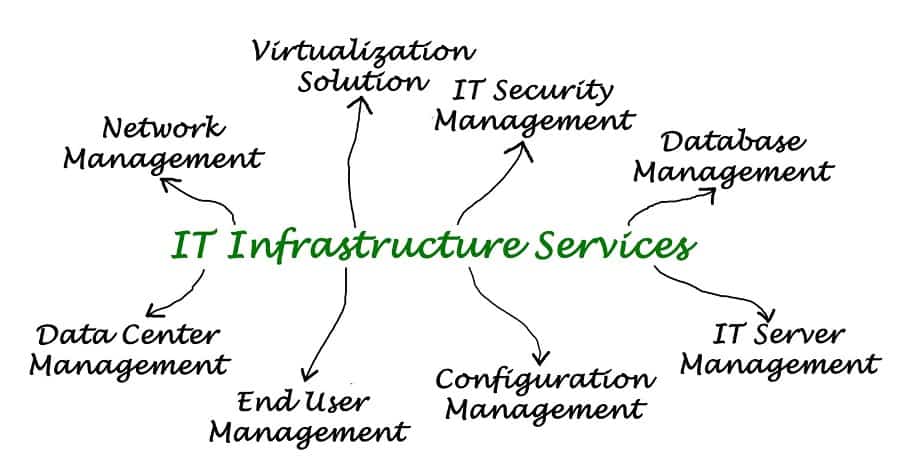Assessing your IT infrastructure
What is IT infrastructure, and why do you need to assess it?
Your IT infrastructure is the backbone of your organization. It comprises all the systems and technologies you use to store, process, and transmit data. To run your organization effectively, you need to assess your IT infrastructure on a regular basis to ensure that it meets your needs.
What are the different IT infrastructure components?
The different components of your IT infrastructure include servers, networks, storage devices, operating systems, and applications. Each of these components plays an important role in enabling your organization to function properly. To assess your IT infrastructure, you need to evaluate each component both individually and as a whole.
The benefits of assessing your IT infrastructure
The benefits of assessing your IT infrastructure include improved performance, increased efficiency, reduced costs, and enhanced security. By identifying problems with your current system and fixing them, you can improve the overall operation of your organization.
Tips for improving your IT infrastructure
Tips for improving your IT infrastructure include upgrading outdated hardware and software, creating backup plans in case of a disaster, and training employees on how to use the technology correctly.
Common problems with IT infrastructures and how to solve them
Common problems with IT infrastructures include outdated hardware and software, insufficient storage space, network congestion, and malware infections. Solving these problems can help improve the performance of your organization significantly.
Getting started and assessing your IT infrastructure
When starting out with an IT infrastructure assessment, the first step is to gather as much information as possible about the current environment. This includes understanding the hardware and software in use and how these are currently used within the organization. In addition, it is important to identify any potential areas of improvement or deficiencies that may exist.
One key area of focus during an infrastructure assessment should be network performance. By identifying and addressing any bottlenecks or high-utilization areas, organizations can improve their overall productivity. Additionally, assessing storage needs is also important in order to ensure that critical data is properly protected and backed up.
Ultimately, performing a comprehensive IT infrastructure assessment can help organizations make more informed decisions about how to best leverage their existing technology investments.
Developing a Data Strategy
When it comes to data, organizations have a big decision to make: What should be kept, and what can be discarded? Developing a data strategy can help organizations answer this question and more.
Creating a data retention policy is essential for any organization. This policy should outline how different long types of data should be kept and why. By having a defined plan in place, organizations can ensure that they are not keeping unnecessary data and that they are able to access critical information when needed.
In addition to retention, organizations need to think about how they will protect their data. This includes both protecting against accidental loss or destruction as well as against cyber-attacks. Implementing strong security measures is critical in order to keep sensitive information safe.
Finally, organizations need to think about how they will use their data. Data can be valuable when it is properly analyzed and understood. Creating a process for analyzing data can help organizations unlock their value and make better decisions moving forward.
Developing a data strategy can be difficult, but it is important for any organization that wants to make the most of its data assets. By taking the time to thoughtfully plan out a strategy, organizations can ensure that they are using their data in the best way possible.
Organizing online communications
As more and more organizations move to a digital-only format, effective organization of online communications is becoming increasingly important. Here are a few tips for staying organized:
- Use folders and labels to organize emails. This can make it easier to find messages when you need them.
- Keep a record of all communication. This can help you track interactions with customers or other stakeholders.
- Use a calendar to keep track of appointments and deadlines. This can help avoid overlap or missed appointments.
- Use a shared drive or cloud storage to store files. This can make it easy to access files from any location.
- Set up rules for sorting emails. This can help automate the process of organizing your inbox.
By following these tips, you can stay organized and efficient when communicating online.
In conclusion, assessing your IT infrastructure is essential for ensuring that your organization runs smoothly. By evaluating each component of your system and taking steps to fix any problems, you can improve your organization’s performance and protect it from potential disasters.
Telecom4Good has created a Global Network Assessment that helps bridge the technology gap between your nonprofit HQ and country offices.
The Global Network Assessment Program (GNAP) develops inclusive collaboration and trust between decentralized country offices and headquarters (HQ) through intentional fact-finding to uncover and understand each office’s unique challenges.
Our GNAP strategic step-by-step guide helps you gather detailed, accurate information about your country offices’ technology challenges. Together, you can create equitable solutions and strategies that meet their needs.
We designed our program to work with your local office staff, regardless of their IT experience, to extract information revealing challenges and inefficiencies that each office might not even be aware of.
Telecom4Good offers three Global Network Assessments to choose from:
Self-Guided Assessment (No cost) A Self-Guided, A Do-It-Yourself Approach
Assisted Assessment A Done-With-You Approach
Telecom4Good Guided Assessment A Done-With-You Assessment
Schedule a call with Telecom4Good to discuss which Global Assessment Program (GNAP) works best for you. You can also email us at gnap@telecom4good.org.
Resources

